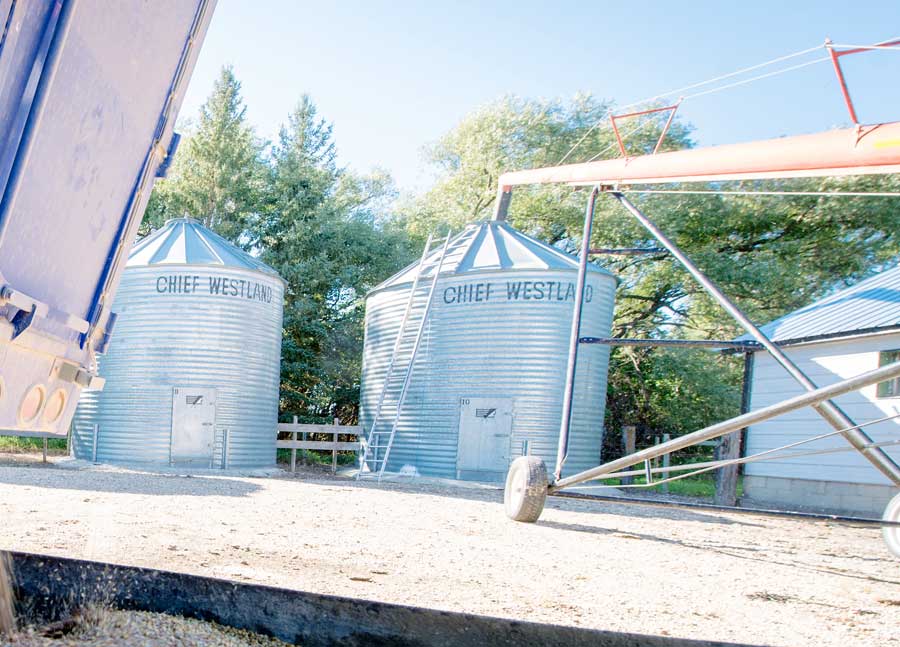Flax TIPS: December is a Good Month to Remember to Check Your Bins
 The first reports of grain spoilage in bins frequently happen in December. Often the lack of snow on a bin roof is a sign of trouble.
The first reports of grain spoilage in bins frequently happen in December. Often the lack of snow on a bin roof is a sign of trouble.
For flax, anything over 10% seed moisture content is considered tough and over 13.5% is damp or high moisture. For long-term storage, flax seed should be brought down to 8.5% moisture.
Temperature and moisture of binned flax should be closely monitored for a month or two after binning. With use of aeration, flax at the bottom of the bin (close to the floor perforations) will dry faster and is usually cooler than flax higher up in the bin. When sampling for moisture and temperature, be sure to separately sample the bottom, middle and top of the bin. Be prepared to move the drier flax seed from the bottom to the top of the bin to achieve more uniform seed moisture content and temperature throughout the bin.
From a safety standpoint, use safety ropes and have an assistant when you enter the top of a flax bin. The seed is slippery and there is a risk of quickly sinking into the flax seed and suffocating.
As daytime temperatures are now are less than 10°C, natural aeration of damp grain will probably not bring the moisture content down any further. If long term storage is desired, then consider using batch or continuous air grain dryers to achieve a dry level. If this is not possible, cooling and maintaining your flax seed under 10oC by aeration will help minimize the risk of spoilage.
For specific recommendations, see the September and November 2015 Flax Council of Canada ‘TIPS’ articles on flax harvest and storage at https://archive.flaxcouncil.ca/tips_article/flax-management-tips-flax-harvest-storage/



